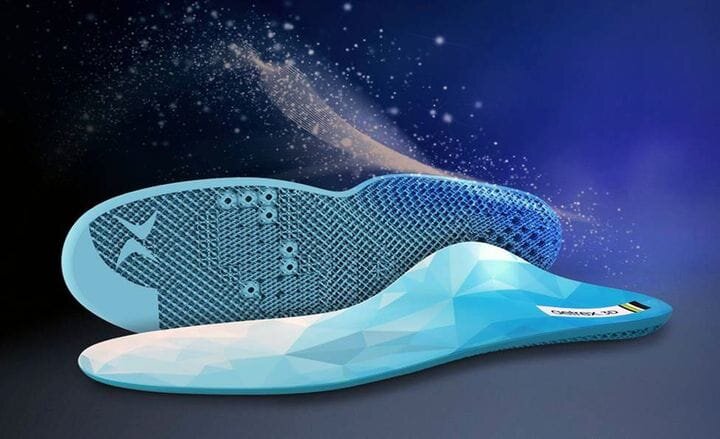![Sample 3D print made with EOS’s new Digital Foam [Source: EOS]](https://fabbaloo.com/wp-content/uploads/2020/05/image-asset_img_5eb08dd76f8c0.jpg) Sample 3D print made with EOS’s new Digital Foam [Source: EOS]
Sample 3D print made with EOS’s new Digital Foam [Source: EOS]
EOS announced something rather interesting, which they call “Digital Foam”.
The idea here is to “take control” of foam. For decades foam components have been produced with conventional means: a liquid is filled with bubbles and allowed to solidify. The trapped bubbles create shock absorbing capacity after solidification.
The problem with the traditional approach is that you can’t really control the bubble locations or sizes very much. Sure, there are techniques to make them somewhat consistent, but what if you needed a foam part with a gradient of different bubble sizes? How could you produce that?
You can’t easily do that with conventional methods.
3D printing can come to the rescue as it can provide a means to print such complex structures fairly easily on many different types of 3D printers.
3D Printed Foam Challenges
However, there is a catch, or rather several.
One is the question of 3D design. While a 3D printer can easily 3D print a design, where does the design come from? What tools can be used to generate such complex foam gradients?
Another question is one of certification. When 3D printed foam parts are produced, how can they be guaranteed to meet the required standards for a particular application?
Yet another question arises when involving personalization. How can 3D scan data for customized foam parts be both obtained and integrated into a 3D design?
As you can see, it’s quite a challenge for a manufacturer to step into the complex world of 3D printed foam production parts. That’s where EOS’s new Digital Foam program comes in.
EOS Digital Foam
While EOS describes the concept as a “program” it is actually more like a “digital product”. When I spoke with them to understand Digital Foam more deeply, they made the analogy to “GORE-TEX”, a common wind proofing material found in outdoor wear. Digital Foam is like that, except it’s not actually a physical product.
Digital Foam Process
It’s a “digital” product. Here’s how it would work:
-
A client, typically an OEM product manufacturer, would contact EOS
-
The client would supply EOS with specifications for the foam to be produced, including the strength, bounce-back factor, etc.
-
EOS would either produce the material for the client on an outsourced basis, or enable the client to produce it themselves using known tools, materials and processes
You can see that Digital Foam isn’t a physical product per se, but is instead like a formula to make a consistent physical product that can be invoked and customized per application.
Curiously, the Digital Foam program can be made outside of the normal EOS ecosystem. I was told that, for example, Digital Foam could be produced on SLA machines if required. However, things are a lot easier if you use EOS equipment and materials.
I’m aware of two companies using the Digital Foam concept. One, mentioned by Aetrex, a comfort footwear manufacturer, uses EOS in outsourcing mode to produce their Digital Foam components. Another, HEXR, a manufacturer of high-end bicycle helmets, is apparently producing Digital Foam components on their own using “the formula”.
Digital Foam nTopology
One of EOS’s partners in this venture is nTopology, a producer of an extremely powerful 3D modeling system that can easily handle the highly complex 3D designs generated by the Digital Foam concept. Manufacturers wishing to produce Digital Foam components on site will be required to use nTopology tools.
Other 3D Printed Foam Applications
I can’t help but wonder if the Digital Foam program is somehow a reaction to Carbon’s work in customized lattices, which they have so profitably done in the past two years. Carbon also saw that product manufacturers were challenged by the software barriers to use 3D printing and developed their own software to overcome them. EOS’s image at top just happens to be of footwear components, the exact same industry where Carbon applied their concept.
I asked EOS about this and they indicated that in fact the intellectual property for digital foam was patented by EOS back in 2010. They created a means for generating complex lattices for use in plastics products, which apparently is now being used in some fashion by other parties.
In any case, it now seems manufacturers have more choices to help them get started developing and making highly complex 3D printed foam components.
Via EOS

